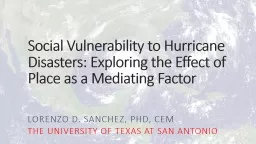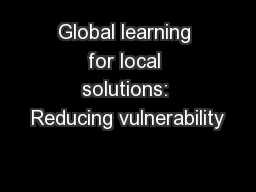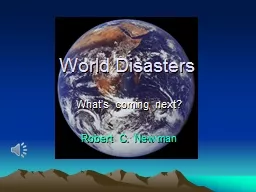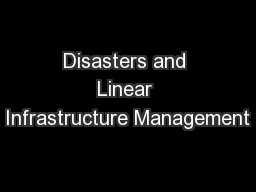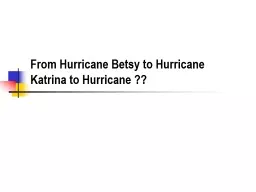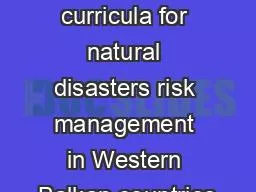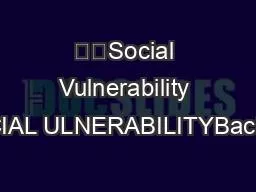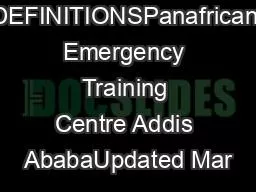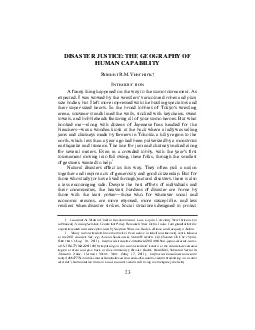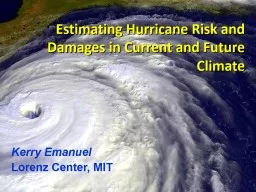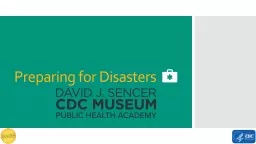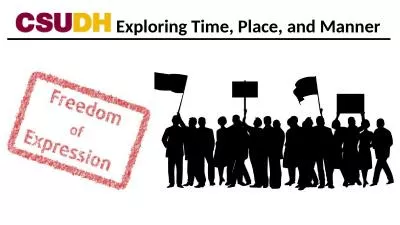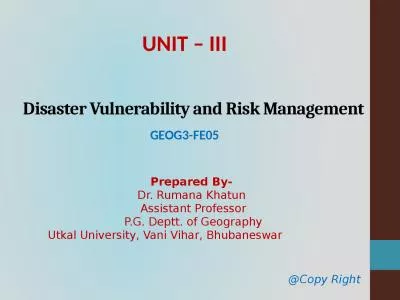PPT-Social Vulnerability to Hurricane Disasters: Exploring the Effect of Place as a Mediating
Author : trish-goza | Published Date : 2019-02-24
Lorenzo D Sanchez PhD CEM The University of Texas at san Antonio Background Annual threat of hurricanes June 1 November 30 Changing demographic composition of Gulf
Presentation Embed Code
Download Presentation
Download Presentation The PPT/PDF document "Social Vulnerability to Hurricane Disast..." is the property of its rightful owner. Permission is granted to download and print the materials on this website for personal, non-commercial use only, and to display it on your personal computer provided you do not modify the materials and that you retain all copyright notices contained in the materials. By downloading content from our website, you accept the terms of this agreement.
Social Vulnerability to Hurricane Disasters: Exploring the Effect of Place as a Mediating: Transcript
Download Rules Of Document
"Social Vulnerability to Hurricane Disasters: Exploring the Effect of Place as a Mediating"The content belongs to its owner. You may download and print it for personal use, without modification, and keep all copyright notices. By downloading, you agree to these terms.
Related Documents

